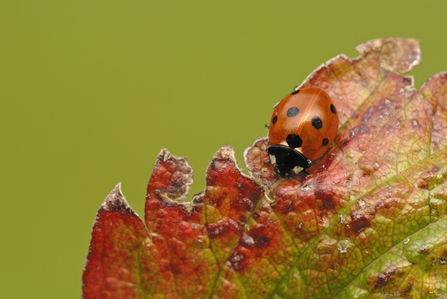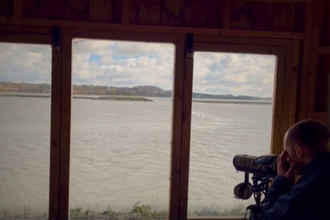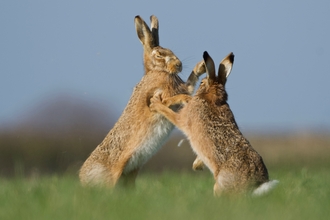The burnt umbers of crisped and fallen leaves have decorated our outdoor spaces like an autumnal carpet for the past few months. We have grown accustomed to the bare branches revealing the perching places of familiar birds or hearing the chirrups of those nestled within the fortresses of twigs and foliage. But as we move towards spring, and the days hold on to their light a little longer, the colour of our wildlife begins to change. Luscious greens of waxy leaves, bristled trees and dewy blades of grass match the vibrant colourations of wildflowers beginning to burst into life. With this, we know that spring has arrived and summer is approaching.
The Art of Leaves
Mark Hamblin/2020VISION

Dawn Monrose
As the changes in our seasons are reflected in the colours of our wildlife, I stopped to think: Why do leaves change colour? How do they know when to turn their brilliant greens into a warming yellow or toasty orange, ready for the autumn and winter ahead?
The colour of a leaf comes from its pigments. Three pigments that leaves produce are chlorophyll (green), carotenes (yellow) and anthocyanins (red). Throughout the spring and summer, leaves produce lots of chlorophyll. Chlorophyll is essential because this is what absorbs sunlight to give the plant its energy.
The leaves will still contain the other pigments, but because chlorophyll is so prominent in the sunnier months, the other colours are rarely visible and remain hidden in the background.
So, when does it start to change?
As autumn approaches, we have less daylight and colder temperatures hindering the production of chlorophyll in leaves. Instead, trees focus their energy on their trunk and roots to survive the winter. As the chlorophyll greens begin to fade, the other pigments take charge. Reds, oranges and yellows become visible – and tell us that autumn is here.
But why are some leaves yellow, some red and some orange?
It is the mixture of anthocyanins (reds), carotenes (yellow) and remaining chlorophyll (green) within each leaf that determines how brightly coloured it will be, just like a painter mixing green, yellow and red paint on a palette!

Over 5,000 winter birds counted at Margaret’s Hide, Fingringhoe Wick Nature Discovery Park
Each winter, thousands of coastal birds flock to Margaret’s Hide at Fingringhoe Wick Nature Discovery Park.

Volunteering to make a difference for nature and people
In our volunteer blog series, we are putting the spotlight on inspiring stories from our amazing volunteers. This time, June Lambert…

Scandal and romance in the wildlife world
Gather, if you will, as we uncover the six most captivating courtship spectacles to grace this season of affection.

